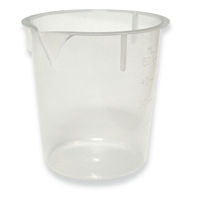Week in Review
Monday-Tuesday
On Monday and Tuesday we filmed the final runs of students' rube goldberg projects. The final run was part of their test grade for the unit and this was the day when the run needed to be perfect in order to be a candidate for the coveted Golden Mousetrap award. The golden mousetrap (yes, I actually spray painted a mouse trap gold) was given to the group in each class who performed a flawless final run and had the most creative and most numerous energy conversions in order to complete their final task. You'll see most of the golden mousetrap winners in the YouTube highlight reel above.
Even though 7 instructional days are used for this project I don't plan on letting it go anytime soon for the following reasons:
- Interpersonal skills- I witnessed an impressive amount of growth in students' abilities to persevere with one another. If you watch my "Rube Goldberg In Process" video students will tell you they had to completely scrap original ideas and revise....over...and over....and over again. This was a frustrating process and it was great watching them work through disagreements with two other people.
- Communication skills- The majority of the students grades come from their ability to (a) diagram out their projects and (b) describe the energy transfers before I videotape them. Every student completed a diagram and I randomly chose students to describe each step. I like how this project force students to communicate their learning in pictures, in spoken word, and in a created form.
- Creativity- Every year I am shocked by students creativity. About 90% of students create fairly standard, straight-forward Rube goldbergs. But as you'll see in the Highlight Reel their is a 10% minority that makes you laugh with surprise every year. Who would have thought to use a fan or a windup jack-in-the-box to pull a tissue out of a box?
- Problem-based learning - At the end of every year I have my students evaluate me as a teacher and provide feedback on what we do. Inevitably around half of my students mention rube goldberg devices as one of the reasons they enjoyed science that year and are looking forward to more science next year. Nothing motivates learning as much as a few well-planned, fun, creative, collaborative projects.
Wednesday
Video Party of the different rube goldberg devices. Students wanted to see what the other classes did and we evaluated how the whole process went this year so I could make modifications for next year.
Thursday
Housecleaning activites for the end-of-semester. Students completed a post-survey for the end of the energy unit, provided feedback on my teaching for the first semester, and then we downloaded pictures of activities we did in science or in other Aces' team activities for the yearbook.
Here are my thoughts when looking at my pre-post data for my energy unit....
- Question 1: 24% is pretty good for question 1 since pre-survey numbers were already at 65%.
- Question 2: I'm a bit disappointed about the 50% growth for question 2 since energy transfers were the main focus of this unit. However, it is only 1 question worth of data points (and it was a tough question). Perhaps if I had asked 2-3 questions about transfers the number would be higher.
- Question 3: I'm all right with the mild growth of 20% on question question 3. Thought I want more than 50% of my students to understand endothermic and exothermic it was a minor focus in this unit and I think if I had spent more time the numbers would be higher.
- Question 4: I've very pleased with the growth in this question. 96% of students indicating they understand the laws of conservation of mass and energy.
Friday
Assembly day. Happy break!
Lessons Learned
- Computers Class: Bobbi Aschwanden and Jason Johnston are doing something right in their Computers class. On Tuesday I gave students an opportunity to edit the videos I took of them on their Rube Goldberg projects with Movie Maker. I said they could doctor it up however they wanted but I wouldn't have time to show them how. Most responded, "No worries. We learned how to do this in Computers." As I filmed the rest of their peers' final runs the rest of the groups messed around with their own videos. That's why my highlight reel looks so good. 90% of the highlight reel's editing came from the students themselves. Interdisciplinary cross connections. Take that CCSS. Keep up the good work Johnston & Aschwanden!










